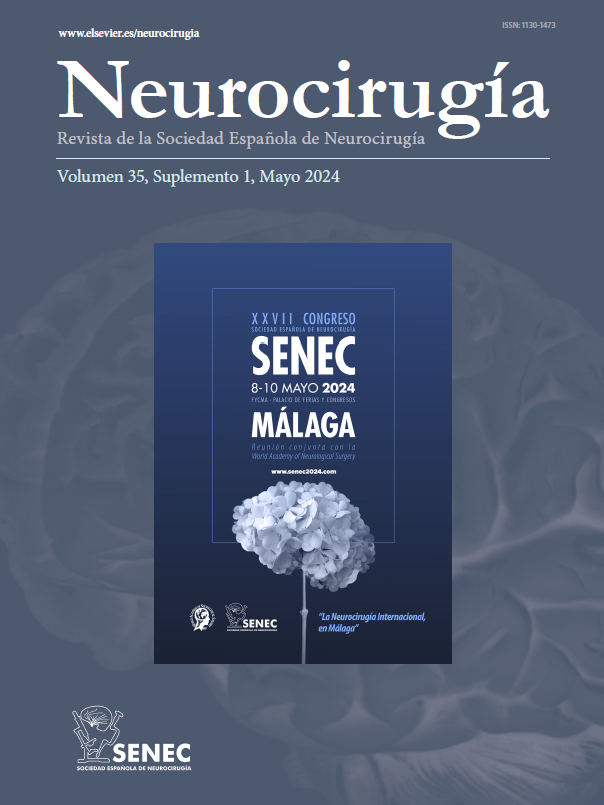P-141 - A RARE CASE OF NACC2-NTRK2 FUSION IN A PLEOMORPHIC XANTHOASTROCYTOMA DURING CHILDHOOD
Hospital Regional Universitario Carlos Haya, Málaga, Spain.
Introduction: Gross total resection of low-grade gliomas usually results in cure, although complete removal on certain location as thalamopeduncular tumors can be difficult to accomplish. Adjuvant therapies as chemo and radiotherapy should be used in cases of subtotal resection or tumor progression. NTRK fusions are quite rare in low-grade glioma, accounting for < 1% of cases, however, a few cases were reported recently. We described a case of a clinically aggressive glioma with low-grade morphologic appearance and unexpected molecular findings.
Case report: A previously healthy 6-year-old boy presented with acute onset of headache, vomiting and right sided weakness. MRI showed an intra-axial, solid, space-occupying lesion in the right thalamopeduncular region. Middle temporal suprachoroidal approach was performed with subtotal resection. Histopathological examination revealed pleomorphic xanthoastrocytoma grade II (GFAP: +, S100: +, sinaptofisina: +, CD34: +, cromogranima: -, IDH1: -, BRAF: -. Ki67: 2%). Immunohistochemical staining for TRK was positive, and the presence of NACC2-NTRK2 fusion was confirmed by RNA sequencing. Given this finding and the existence of an inoperable tumor remnant (solid and cystic component), patient was considered candidate for treatment with Larotrectinib (TRK inhibitor). Currently he is undergoing treatment with good outcome and stable disease.
Discussion: The report of this case aims to highlight the utility of expanded molecular testing in low grade gliomas. Since excellent response rates and low toxicity are recorded with the use of selective TRK inhibitors, it is important not to miss NTRK rearranged tumors. Regarding testing, immunohistochemical staining for TRK has been advocated as a screening tool, but the presence of a NTRK fusion should be confirmed by RNA sequencing.







